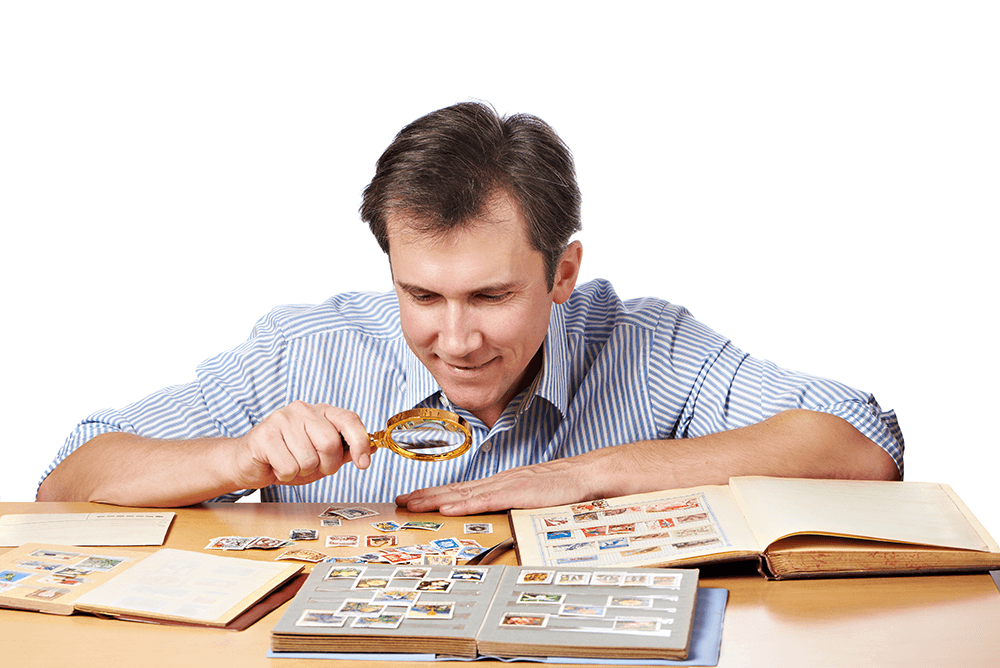
 Storage Tips
Storage TipsHow to Properly Store Stamps for Storage
Collecting stamps is a treasured pastime that preserves little pieces of history for yourself and the generations to come. Whether you're a new stamp collector or have been partaking in his hobby for years, it's important to know how to properly store stamps so they won't get damaged. This is especially important if you decide to use long-term storage.
Stamps need diligent care because they are small pieces of paper backed with an adhesive backing. This makes them a collectible that is challenging to keep in mint condition, especially as they get older.
However, by following some key steps, you can keep your stamp collection in the best condition possible for many years and decrease their chance of becoming damaged in storage. Here is how to store them if you plan to put them in long-term storage.
What Type of Mounting Paper do you Need?
Your stamp album should use acid-free paper. Thankfully, this should not be too much of a problem because most modern paper is acid-free. However, be on the lookout for traditional paper that contains lignin from mechanical pulp, which degrades and turns yellow as time passes.
As this acid works into the paper, it becomes brittle and eventually works into the stamps that are on top of the paper. Be sure to double and triple-check that the paper you mount your stamps on are acid-free to avoid this problem.
What Should you Avoid Using on Stamps?
Along with paper with acid, you should avoid stamp hinges, which are small pieces of gummed transparent paper that are used to set the stamps onto your album. Though these are normally the go-to method for mounting stamps because they are economic and convenient, they can damage the adhesive side of your stamps. To avoid this problem, use plastic stamp mounts, which won't damage the reverse side of the stamp. Stamp mounts are plastic strips that safely display stamps. They have adhesive on one side that can be mounted into a stamp album. There is an opening within the mount to insert the stamp into a square frame that you can cut to size. This setup prevents adhesives from touching the stamp, preventing damage.
What Type of Plastic Stamp Mounts Should you use?
Good plastic stamps should protect your stamps from dust, humidity, and heat. This plastic shouldn't change color over time. If it yellows or becomes brittle, change your stamp mounts. They should remain clear, be adequately stiff, and not shrink or change shape.
Fortunately, quality stamp mounts aren't hard to find, nor are they expensive. One can easily find everything they need to mount and protect their stamps at the website Stamp-Collecting-World.
Where Should Stamps be Stored?
You should store your stamp collection in a high place, such as a fixed shelf or on top of a few pallets. Don't leave the box on the floor, because this leaves its contents vulnerable to water damage and even pests. The high location also makes sure it's not crushed under the weight of other heavy boxes, which can inadvertently damage your stamp collection. If you must stack boxes, make sure it's not teetering on top and unstable, but firmly placed where it won't move easily if disturbed.
What Kind of Environment is Best for Storing Stamps?
The best environment for storing stamps is in a dark, dry space. Moisture in the air can slowly wear down your stamps, grow mold, and fade the beautiful colors and structure of your collection. Therefore, make sure the room that you store your stamps in is climate-controlled to manage humidity.
Air conditioning is crucial if you live in humid states like Florida where much of the year involves humid conditions. You should also throw in a few desiccant packets in the box where you store the stamp albums to collect any extra moisture that may have entered the box before sealing.
A dark place ensures that natural or artificial sunlight doesn't fade the stamps. UV rays especially are dangerous to stamps because they can fade colors after constant exposure. By keeping your stamp albums in an enclosed box, you can block light from harming your valuable collection.
What are Some Must-have Stamp Tools?
When you store your stamps in an album, it's important to take the proper precautions to prevent any kind of damage. Acid paper and improper mounts aren't the only threats to your stamps, but the oils from your hand can also degrade them. Therefore, you should use stamp tweezers to pick up and handle your collection. They are extremely affordable and prevent harmful oils from transferring from your fingers to the surface of your stamp collection.
A magnifying glass is another handy tool that avid stamp collectors highly recommend. With this tool, you can examine your stamps closely and make sure that they are in good condition. When you take your stamps out from storage, use a magnifying glass to inspect the colors and ensure that nothing has been damaged.
We're Your Storage Solution!
Storage Rentals of America is your convenient self-storage solution. So come into our office or give our storage experts a call at 1-800-457-5678. Our call center is available 7 days a week and can help determine which storage unit size best fits your storage needs.



